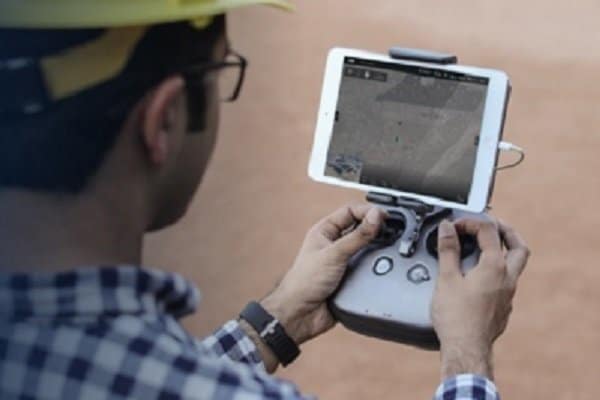Through a July 17th press release, Cape announced that it was dropping DJI and partnering with Skydio “effective immediately.” Here’s part of their press release.
“Cape, the leading cloud platform for remote drone operations, today announced that effective immediately, the company will drop support for DJI drones.
As part of the decision, the company also launched the Cape Preferred Partner Program (P3), a new initiative aimed at ensuring the security of commercial drone integrations across industries.
Skydio, the world leader in creating drone systems that combine artificial intelligence, computer vision, and advanced robotics, is the first company to officially join Cape P3, just months after they were selected by the U.S. Department of Defense to take part in the Short Range Reconnaissance program for the U.S. Army.
Together, the companies will collaborate on next-generation technology that is both easier to use and more capable than ever before, enabling secure, intelligent, and cost-effective remote drone operations for both enterprises and government organizations.“
The move was no doubt influenced by the Trump administration’s growing suspicion of Chinese tech manufacturers.
It follows the Department of Homeland Security (DHS)’s warning about potential risks posed by Chinese drones. For a long time, American security agencies have been wary about the implications of data collected using DJI drones.
The fear is that sensitive information could be either compromised by or shared with hostile third parties. Given DJI’s dominance of the global drone market, as well as their increasing use in sensitive fields like law enforcement and oil & gas, American lawmakers believe these fears are legitimate.
DJI’s attempt at damage control
In all fairness to DJI, the security concerns that prompted Cape to drop it are so far only hypothetical. In an attempt at easing these anxieties, the Chinese company has been taking a series of placatory steps.
It recently announced plans to start assembling drones in a warehouse in California. If approved, this will be the company’s first assembly plant outside Shenzhen, China.
It plans to manufacture the Mavic 2 line of enterprise drones, subject to approval by the US Customs and Border Protection. These drones are used widely in real estate and other industries.
This compliance is crucial because it will allow DJI to sell its assembled drones under the US Trade Agreements Act. If successful, the company could be allowed to sell its UAVs to certain government agencies.
In the past, DJI has also written an open letter to the Senate Committee on Commerce, Science, and Transportation. In it, the company denied it could share data with third parties without the drone owner’s knowledge or consent.
About Cape and Skydio’s partnership
Cape’s press release also had another major announcement. Other than partnering with Skydio, the company also launched the Cape Preferred Partner Program (P3). This initiative is aimed at making sure commercial drone integrations are secure across industries.
So far, only Skydio has officially joined. It remains to be seen whether P3 will grow into a body that can set or influence industry standards. Both companies already have some impressive capabilities, so such a program should ideally spur more innovation.
Cape has established itself as a world leader in drone deployment applications, especially aerial telepresence software. These innovations allow users to control and manipulate drones from any part of the world.
Skydio, on the other hand, is an AI and robotics company that’s integrating these technologies into UAVs. Its flagship product is the Skydio R1 drone, which is capable of autonomously following a target.
It does so by utilizing 13 onboard cameras to understand and navigate its surroundings. Skydio’s futuristic drone technology is already paying off. The company was selected by the US Department of Defense to participate in its small UAS development program.
Given the two companies’ capabilities, the Cape-Skydio partnership appears to be the perfect match. The Cape Aerial Telepresence software combined with Skydio’s advanced drone technology is bound to offer the best drone data protection.
How will DJI respond?
Cape’s announcement might be a setback for DJI, but the Chinese company shouldn’t be dismissed just yet. It’s still the world’s largest drone manufacturer, with a global share of 75%. They’re also notorious for introducing their technology to compete with perceived threats.
One of the best examples of this is the GoPro drone subsidiary. The company had to exit this sector after facing fierce competition from established manufacturers like DJI. Later on, DJI introduced its action camera, the DJI Osmo, into the market to compete in GoPro’s main market.
The Chinese company’s R&D department appears to be working tirelessly, churning out product after product. Examples of drone-related products introduced in the recent past include the Terra 3D Mapping software and the smart controller. A new FPV system was also recently introduced to cater to drone racing enthusiasts.
From these examples, it’s clear the company is constantly working on new products, especially in areas where they’re not so strong. It wouldn’t come as a surprise if the company were working on a product to give it an advantage over Cape P3.
For now, the Chinese giant is still firmly ahead. Unless the Trump administration takes drastic measures against DJI as it did with Huawei, the company will maintain its lead in the foreseeable future.
Conclusion
Although losing Cape is a hard pill to swallow, it doesn’t seem like it will dent DJI’s market share. However, the company should be worried about continued scrutiny of its security credentials by the US government. If other partners follow Cape’s lead and abandon the DJI platform, it could present a real problem for the company.






